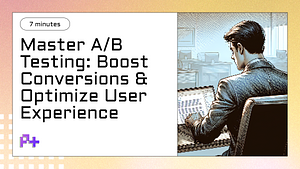1. What is an AI Text Generator and How Does It Work?
An AI text generator is an advanced software tool that leverages artificial intelligence to create human-like text based on specific prompts or input. These generators utilize natural language processing (NLP) techniques to analyze and understand the structure, context, and nuances of language. By training on vast datasets that include books, articles, and other forms of written content, AI text generators can produce coherent and contextually relevant text in various styles and formats, ranging from casual blog posts to formal reports.
The underlying technology of an AI text generator typically involves machine learning models, particularly those based on deep learning architectures like transformers. These models are designed to predict the next word in a sentence based on the preceding words, thereby enabling them to generate text that flows naturally. The process begins with the model being fed a prompt or a series of keywords, after which it processes this information to generate a response. This capability allows for a wide range of applications, including content creation, marketing copy, and even creative writing, making AI text generators incredibly versatile tools for businesses and individuals alike.
As AI text generators continue to evolve, their effectiveness and accuracy have significantly improved, making them indispensable in various industries. They can save time and resources by automating content creation while also providing users with high-quality text that requires minimal editing. Furthermore, many AI text generators offer customization options, allowing users to adjust tone, style, and length to better fit their specific needs. Whether for generating social media posts, drafting articles, or crafting emails, an AI text generator is an innovative solution that enhances productivity and creativity in writing.
2. Benefits of Using AI Tools for Writing
The rise of AI text generators has transformed the way individuals and businesses approach writing. One of the most significant benefits of using AI tools for writing is their ability to enhance productivity. These advanced technologies can produce high-quality content in a fraction of the time it would take a human writer. Whether you need blog posts, marketing copy, or social media updates, AI tools can quickly generate text tailored to your specific requirements. This efficiency not only saves valuable time but also allows writers to focus on strategic tasks such as planning and editing, rather than getting bogged down by the initial drafting process.
Another compelling advantage of AI text generators is their capacity to assist with creativity and idea generation. Many users struggle with writer's block or find it challenging to brainstorm new concepts. AI tools can provide fresh perspectives and diverse writing styles, helping users explore different angles and themes. By generating suggestions based on keywords or topics, these tools can inspire writers to think outside the box and elevate their content quality. This collaborative aspect of AI writing tools fosters innovation, enabling users to produce engaging and original material that resonates with their target audience.
Furthermore, using AI tools for writing can significantly improve content optimization. With built-in SEO capabilities, AI text generators can analyze keywords, readability, and overall structure to ensure that the content not only engages readers but also ranks well in search engines. This optimization is crucial in today’s digital landscape, where visibility can make or break a business. By leveraging AI technology, writers can create content that adheres to best practices for SEO, enhancing their chances of reaching a broader audience and driving traffic to their websites. Overall, the integration of AI in writing workflows presents numerous benefits that can lead to increased efficiency, creativity, and online visibility.
3. How to Use Our Free AI Text Generator
Using our free AI text generator is a straightforward process designed to empower users in creating high-quality written content effortlessly. To begin, simply navigate to our website and locate the AI text generator tool on the homepage. Once there, you’ll find an intuitive interface where you can input your desired topic or keywords. This feature allows you to tailor the content to your specific needs, ensuring that the generated text aligns with your objectives, whether it’s for blog posts, marketing copy, or creative writing.
After entering your topic, you can customize additional settings to enhance the output. These settings include selecting the tone of voice—ranging from formal to casual—and the length of the text, which can be adjusted to fit your requirements. Once you’ve made your selections, click the “Generate” button. The AI text generator will quickly process your input and produce a draft that you can review and edit. This step not only saves you time but also provides a solid foundation that you can refine to meet your personal style or brand guidelines.
Finally, it’s important to make the most out of the generated content. After reviewing the output, consider revising certain sections for clarity or adding personal insights to enrich the text. Our AI text generator provides a great starting point, but your unique voice will make the content truly engaging for your audience. Additionally, remember to optimize the final version for SEO by including relevant keywords and phrases that can enhance its visibility on search engines. By following these steps, you’ll effectively utilize our free AI text generator to create compelling, optimized content that resonates with your readers.
4. Tips for Getting the Best Results from AI Writing Tools
When utilizing an AI text generator, achieving optimal results requires a thoughtful approach. First and foremost, it's crucial to clearly define the purpose of your content. Whether you are crafting a blog post, a product description, or social media posts, having a specific goal in mind will guide the AI in generating relevant and coherent text. Providing context, such as your target audience and the desired tone, can significantly enhance the quality of the output. For example, if you’re writing for a professional audience, instruct the AI to adopt a formal tone, while a more casual tone may be suitable for lifestyle content.
Another effective strategy is to experiment with prompts. The AI text generator relies heavily on the instructions it receives. Instead of using vague or generic prompts, try to be as detailed as possible. Including keywords, specific themes, or even examples of what you’re looking for can lead to more precise and engaging content. For instance, if you're generating a product review, you might include key features to highlight or particular customer demographics to address. This level of detail not only helps the AI understand your expectations better but also aligns the generated content closely with your needs.
Finally, don't shy away from editing and refining the AI-generated text. While these tools are incredibly advanced, they may not always hit the mark on the first attempt. Reviewing the output allows you to infuse your unique voice and ensure that the content aligns with your brand’s messaging. Additionally, consider running the text through SEO tools to check for keyword optimization, readability, and overall engagement. By combining the strengths of an AI text generator with your own insights and editing prowess, you can create high-quality, compelling content that resonates with your audience.
5. Frequently Asked Questions about AI Text Generation
AI text generation has surged in popularity, leading to a plethora of questions from users eager to understand its capabilities and limitations. One common query is, How does an AI text generator work? Essentially, these tools use sophisticated algorithms, often based on machine learning and natural language processing, to analyze vast amounts of text data. They learn patterns, grammar, and context, enabling them to produce coherent and contextually relevant content. This technology has improved significantly, allowing users to generate everything from creative writing to technical documentation with minimal input.
Another frequent concern revolves around the quality and originality of the content produced by AI text generators. Many users wonder if the generated text will be unique or if it risks being flagged for plagiarism. Most advanced AI text generators employ mechanisms to ensure that the content they create is original and tailored to the user's specifications. However, it's still wise for users to run the output through plagiarism detection tools to ensure its originality, especially for commercial purposes. Understanding the balance between using AI for efficiency and maintaining quality control is crucial for anyone leveraging these tools.
Lastly, users often ask about the ethical implications of using AI text generation. Questions about copyright, authorship, and the potential for misuse are at the forefront of discussions in this domain. While AI can assist in generating content, it's essential for users to acknowledge that they remain responsible for the use of that content. This means ensuring it adheres to legal and ethical standards, especially when it comes to sensitive topics or proprietary information. As AI technology continues to evolve, staying informed about these ethical considerations will help users navigate the landscape of AI text generation responsibly.



